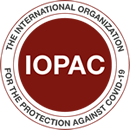<p>A detailed analysis of human African trypanosomiasis data systematically collected by WHO in the years 2000-2018 in the HAT Atlas was <a href="https://web-prod.who.int/publications-detail/pntd.0008261">published in PloS NTDs </a>showing the updated picture of the elimination trends in this disease.</p><p>Human African trypanosomiasis (HAT), also known as sleeping sickness, is a lethal disease transmitted by tsetse flies, causing epidemics in Africa at different times in the 20th century. Over the past twenty years, huge efforts made by a broad coalition
of stakeholders curbed the last epidemic, and the disease was targeted by WHO for elimination as a public health problem in 2012.</p><p>The analysis of global indicators and milestones of the WHO NTD roadmap has been updated to 2018 and recently published. The disease occurrence, the geographical distribution and the control activities show that:</p><ul><li>977 cases of HAT were reported in 2018, down from 2,164 in 2016.</li><li>The area at moderate or high risk of HAT has shrunk to less than 200,000 square kilometres. More than half of this area is in the Democratic Republic of the Congo.</li><li>Health facilities providing diagnosis and treatment for HAT have increased since the last survey, meanwhile active screening is maintained at similar levels.</li></ul><p>The number of cases, the main global indicator, is already well within the 2020 target (i.e. 2,000 cases). The areas at moderate or higher risk (i.e. > 1 case/10,000 people/year) are also nearing the 2020 target [i.e. 90% reduction (638,000 km2) from
the 2000–2004 baseline (709,000 km2). The reliability of these data is backed by a reinforced coverage of the populations at risk by surveillance and control activities, providing strong evidence that global elimination of the disease is advancing.</p><p>Recently new indicators were developed to assess the endemic status of countries and to validate HAT elimination as public health problem at the national level. The current results with these indicators are also presented, showing that eight countries
meet the requirements to request the validation (i.e. Benin, Burkina Faso, Cameroon, Cote d’Ivoire, Ghana, Mali, Rwanda, and Togo), while in other countries more efforts are needed in surveillance, control, or both.</p><p>Now, the HAT community must gear up for the interruption of gambiense HAT transmission (WHO 2030 goal), by preparing for both the expected challenges (e.g. funding, coordination, integration of HAT control into regular health systems, more adapted tools,
cryptic trypanosome reservoirs, etc.) and for the unexpected ones.</p><p>It is important to mention that for the rhodesiense form of the disease, which represents a small part of the overall HAT burden, the problem of under detection is on the rise and is a challenge that must be addressed. Also, because of the capital role
played by the animal reservoir, the elimination of rhodesiense HAT transmission is not envisioned at this stage.</p><p><span> </span></p><p><span> </span></p><div></div>
